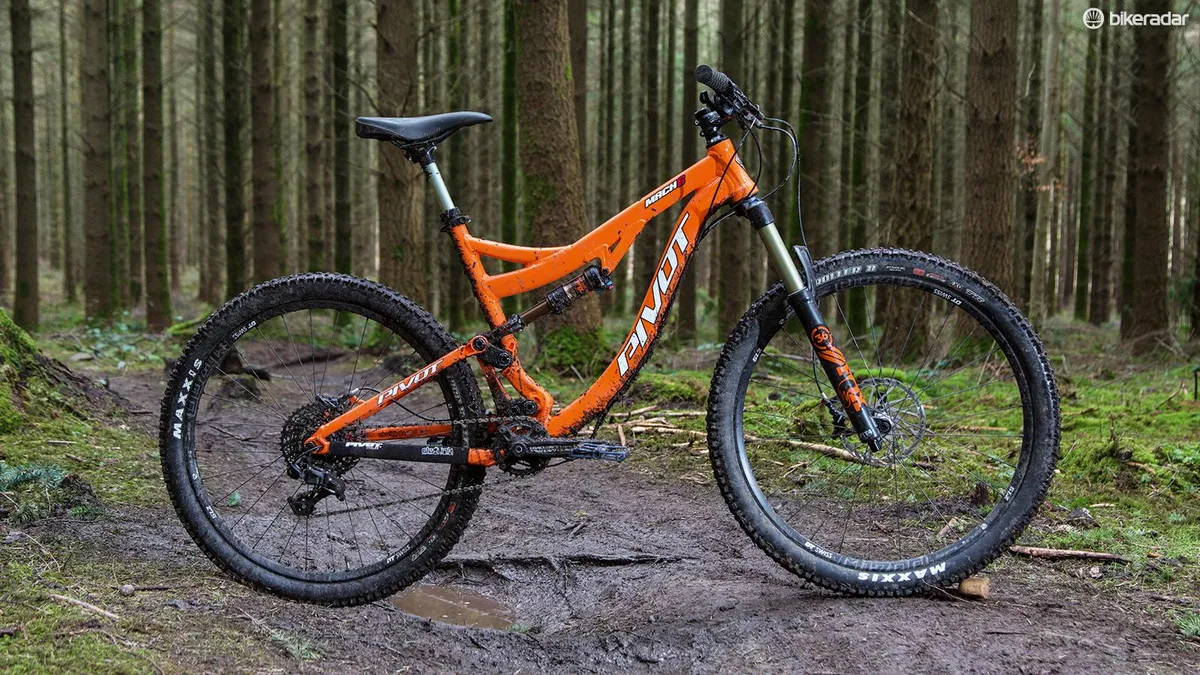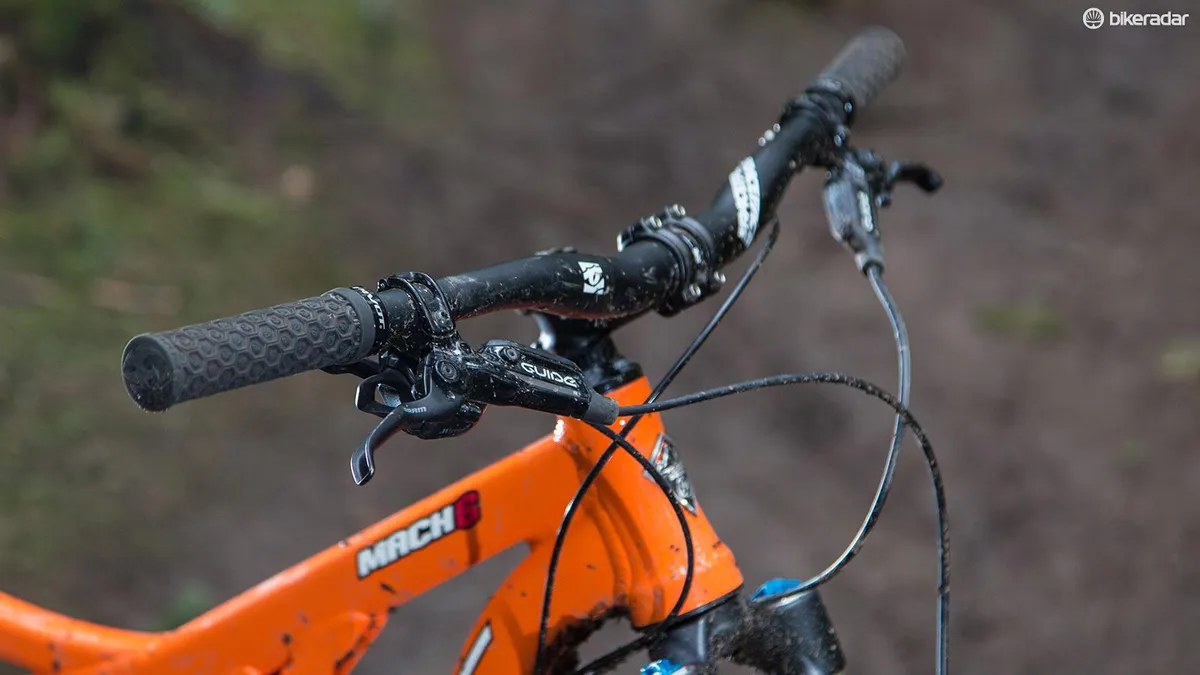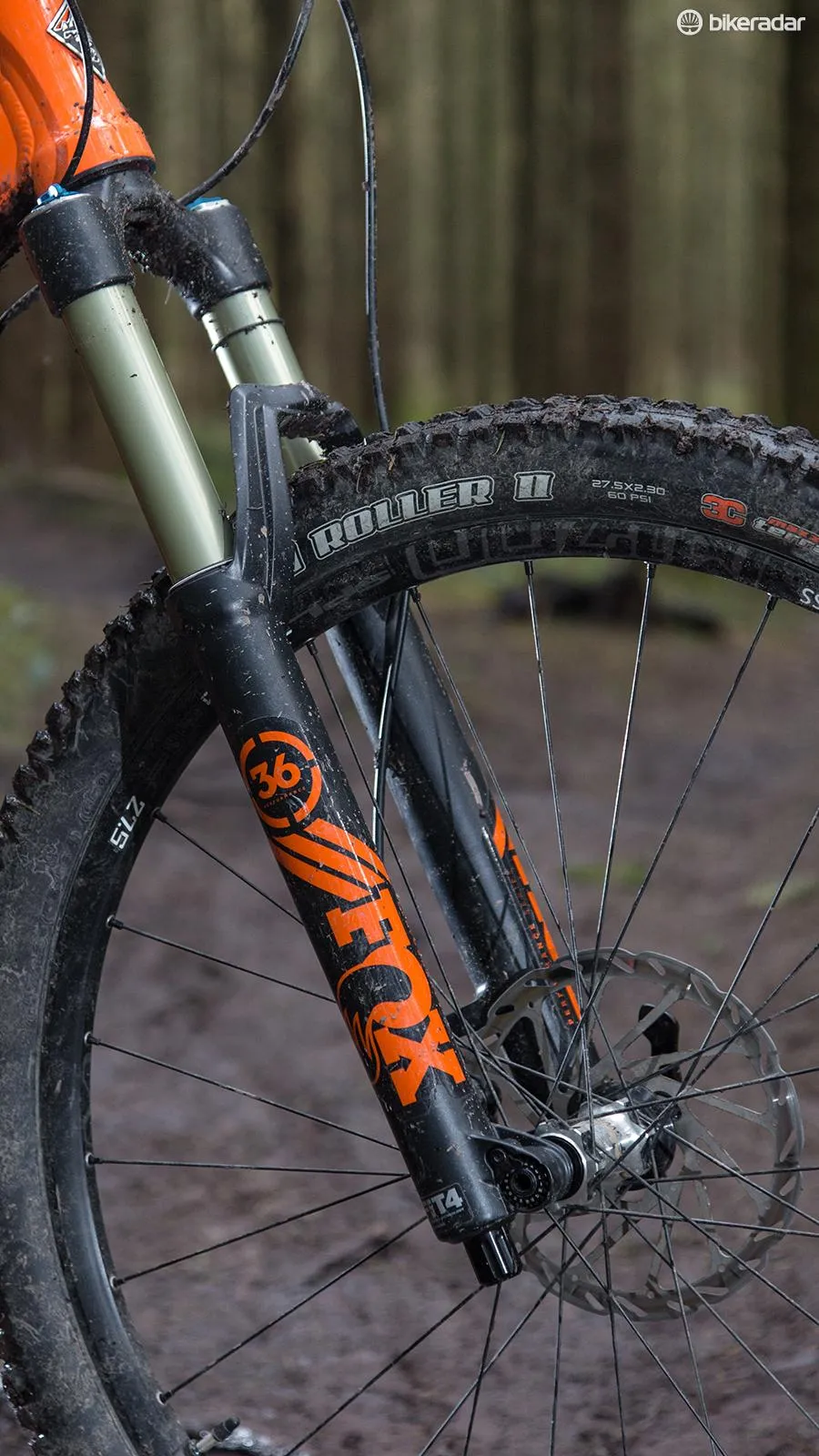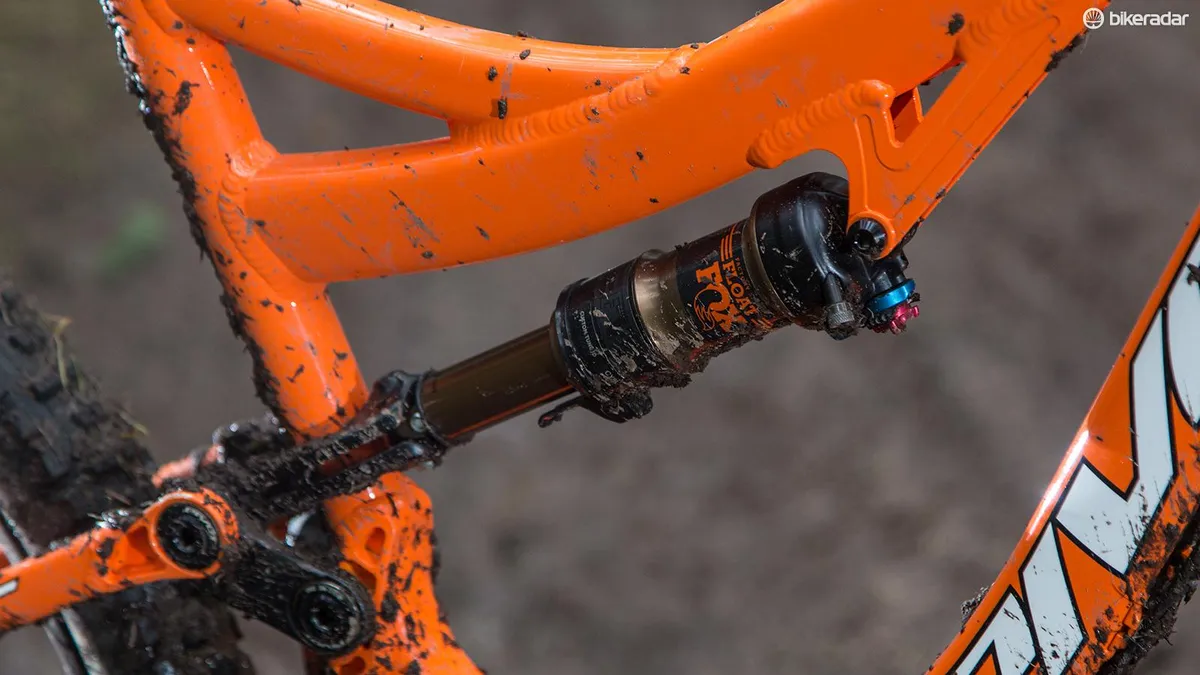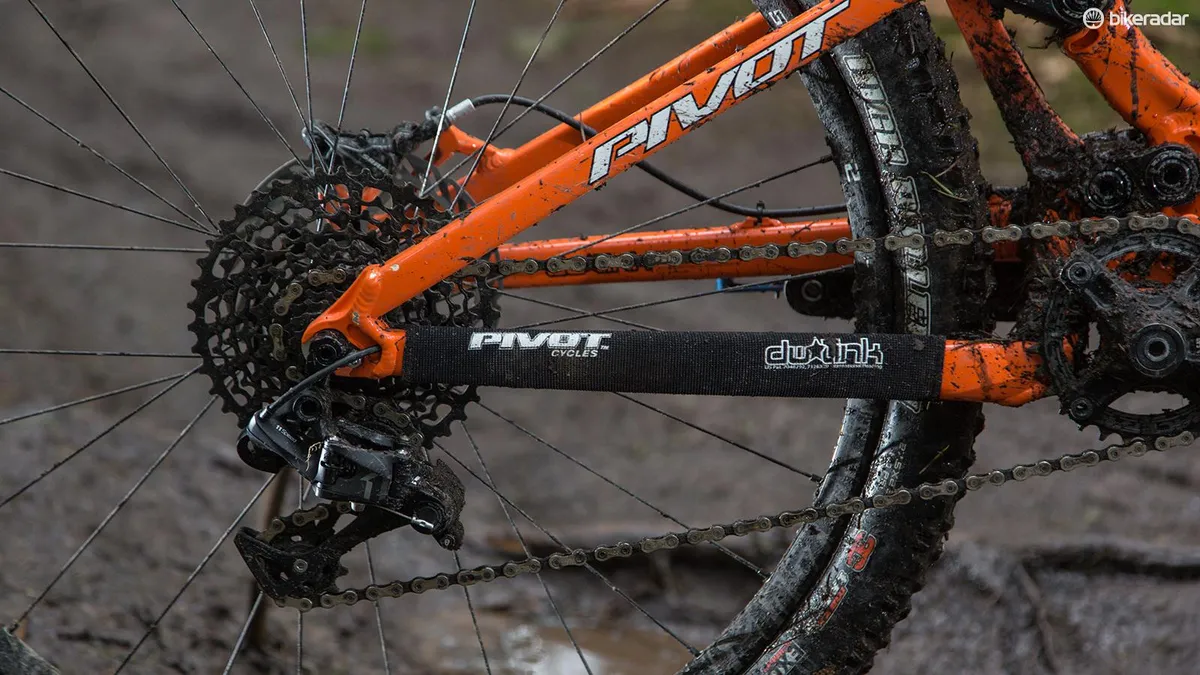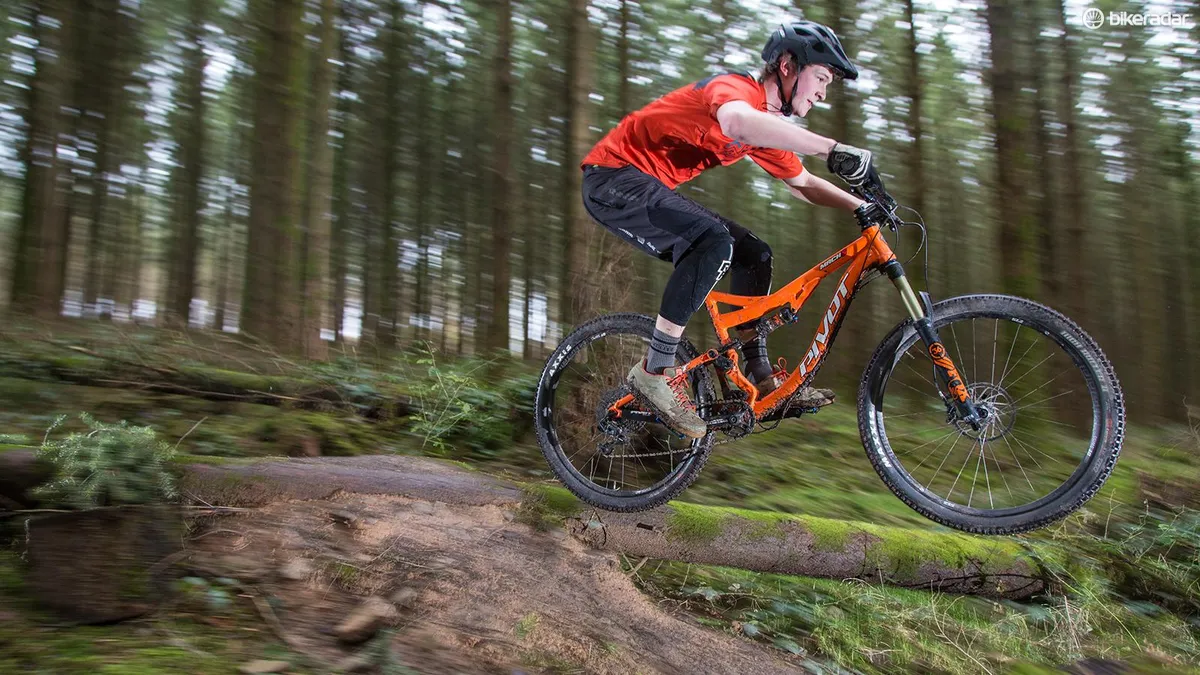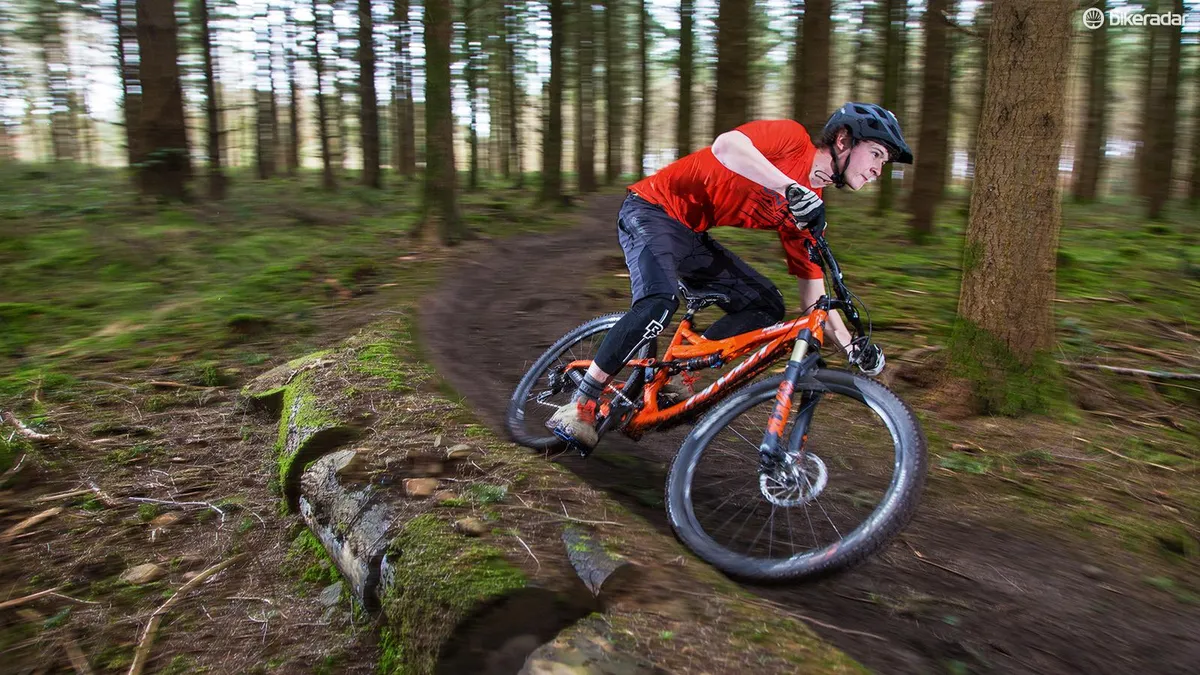Pivot describes the Mach 6 as the "most versatile enduro bike on the planet" and it’s certainly a smooth pedalling, future-proofed flow rider with a top-quality shock. What’s it like flat out though?
Lightweight alloy frame and hard-hitting kit
Varying tube wall thicknesses and extensive pocketed details mean the Mach 6 Aluminium’s hydroformed alloy frame only weighs 400g more than the carbon version, according to Pivot, at 3.35kg for a medium frame with Fox Float DPS EVOL damper. It shares the same updated, stiffer DW-Link suspension architecture, made possible by wider ‘Boost’ rear hub spacing and a PF92 bottom bracket (BB) shell.
This also means there’s room for big rear tyres despite the relatively short 430mm chainstays. Top-quality Enduro Max bearings help keep the 155mm (6.1in) rear stroke smooth.
ISCG chain guide tabs and a removable ‘side swing’ front derailleur mount add versatility. The gear cables all run externally on the front triangle for easy maintenance (the rear then continues through the chain stay) and the rear brake hose is external all the way to the easy-to-adjust post-style brake mounts at the far end.
The dropper post cable pops out of the bottom of the multi-piece, S-bent and kinked seat tube in a loop before running up the underside of the down tube, past the bottle cage bosses. That’s the only bottle mount on the bike - not the most practical position, but better than nothing.
Our frame was built up with Pivot’s ‘X1’ kit (actually a mix of SRAM X1 and GX), including a hard-hitting, 160mm (6.3in) travel, Performance series Fox 36 Float fork. The Race Face Ride cranks are fitted with a 30t narrow/wide-toothed chainring, and the 740mm handlebar is Race Face Ride too. Our sample bike came with DT Swiss M 1700 SPLINE Two wheels rather than the standard SUNringlé Charger Comps, as well as an X-Fusion dropper post that meant we never had to break our flow to adjust our seat height.
Free-flowing feel
Flow is a big part of the Pivot experience too. The twin-link, virtual pivot point DW-Link design is all about getting a consistent connection with the trail, whatever’s happening under your wheels. This neutral, free flowing suspension feel is enhanced by the EVOL shock, which has a higher-volume negative spring than the standard Float DPS, creating an extra-sensitive initial stroke.
The single-ring transmission removes any chance of the mushy feel that Pivots used to suffer from in the smaller chainring of twin-ring set-ups. That means consistent traction and reduced pedal kickback across big swathes of stutter-bump roots and rocks, so you’re free to go hard on the brakes or get the power down whenever you want without the back end skipping around.
Even run with 30% sag, the custom-tuned shock stays relatively high in its stroke, giving excellent ground clearance and enabling you to keep the pedals turning up stepped or rutted climbs. The short wheelbase (1,154mm) and relatively long stem (70mm) of our large bike also meant it steered well on climbs rather than flopping around.
You may have to flick the low-speed compression damping lever across to the middle setting to stop bounce if you’re a particularly choppy or slow-rev climber. That’s what it’s there for though, and it’s easy to reach so it’s not really an issue. You do need to pay attention to what shock pressure you’re running though, because a small change in sag makes a big change to the bike’s behaviour.
As good as the damping of the rear shock is, it comes up shorter in the stroke for a given hit than the piggyback Fox Float X supplied with the pricier Mach 6 Carbon models. The Pivot still carries speed okay and can handle a big drop when it needs to, but it doesn’t drop its shoulder and charge through the big stuff like you’d expect of a 6in bike. The do-it-all geometry also cramps the flat-out descending performance of the frame.
We’ve no complaints about the 66.25-degree head angle, but the front centre (distance from BB to front axle) is very short by current enduro standards. This means that while the frame and fork are impressively stiff in terms of tracking and holding lines, the bike feels perched and precarious for its travel rather than hunkering down and ripping round.
The slack seat angle means that the lower you have the saddle, the shorter the bike feels. While they’re easy to change, the relatively long stem and narrow bar (740mm) don’t help confidence when you’re really hauling either.
